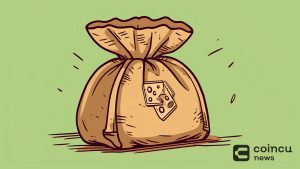[Part 1] Crypto Market Report For The First Half of 2022
The first half of 2022 has been one of the most negative periods for the crypto market in the last two years. LUNA, one of the largest ecosystems in the crypto market collapsed, many native organisations in crypto fell into a “forced sell” situation, trading activity and prices plummeted, etc.
![[Part 1] Crypto Market Report For The First Half of 2022 1 Market Report](http://news.coincu.com/wp-content/uploads/2022/07/image-1160.png)
Core Knowledge
- The US government implemented a tight monetary policy to withdraw excess money from the economy.
- Crypto markets are highly correlated with the US economy, fluctuating similarly to high-risk asset classes. So, when the US government implements a tight monetary policy, the crypto market tends to fall more sharply than other financial markets.
Economic & Political Overview For The First Half Of 2022
Due to the impact of Covid-19, the FED implemented a loosening monetary policy, “injecting” about $4.6 trillion into the market with the aim of stimulating the economy to develop again after the blockade due to the epidemic.
![[Part 1] Crypto Market Report For The First Half of 2022 2 Economic & Political Overview For The First Half Of 2022](http://news.coincu.com/wp-content/uploads/2022/07/image-900-1024x658.png)
Low-interest rates create a “cheap” source of capital, contributing to abundant liquidity for financial assets. This is the ideal environment for risky assets like tech stocks or the crypto market. This makes the average ROI of investments in the market mostly positive:
- BTC ROI reached 1,700%, and the total market cap increased by 2,000%.
- 40% more golden ROI.
- Stock with a gain of 110%.
However, under high inflation due to monetary easing and political conflicts, central banks were forced to tighten quantitative (QT), withdrawing excess money from the economy.
This is an overview of the main features of the macroeconomic situation and the financial market in general for 2020 – 2022. Next, we will take a look at the outstanding events affecting the macro situation in the first half of 2022.
Political Conflict Between Russia And Ukraine
The political conflict between Russia and Ukraine has had a negative effect on the overall economy. As sanctions on Russia from the West hit the prices of oil, food and basic commodities causing them to grow.
Thereby causing very serious problems for the economy such as supply chain disruptions, inflation, and rising costs… forcing the Fed and central banks to have plans to raise interest rates and tighten monetary to control inflation.
Specifically, the price of Brent oil has increased by ~46.6% from the beginning of the year to the end of June. Among them, there is a sudden increase of 30% since the Russian president, Vladimir Putin announced a special military operation. with Ukraine on February 24.
![[Part 1] Crypto Market Report For The First Half of 2022 3 Political Conflict Between Russia And Ukraine](http://news.coincu.com/wp-content/uploads/2022/07/image-901-1024x644.png)
Although there has been cooling down (down ~14% since the peak reached in March), but facing risks from many factors (political situation, OPEC countries cannot meet to increase oil production …), and The future for oil prices is still quite uncertain.
Besides oil prices, the war has also contributed to pushing up food prices (especially in the European region) when Russia and Ukraine are the two countries with the world’s top wheat exports. As well as crude oil is also an important production input for the agricultural industry.
![[Part 1] Crypto Market Report For The First Half of 2022 4 Real wages have been pushed to the highest level in recent years.](http://news.coincu.com/wp-content/uploads/2022/07/image-902-1024x576.png)
Since then, people’s living standards on a global scale are under great pressure from the political purposes of countries forcing them to tighten their spending. Data from the US Bureau of Economic Analysis shows that the growth rate of people’s spending in this country is at the lowest level since 2021 until now.
![[Part 1] Crypto Market Report For The First Half of 2022 5 markdown](http://file.coin98.com/images/markdown-PNBAjxGj5NSx8wZv.png)
Due to rising commodity prices and difficult living conditions, people in general will have to spend more on basic needs. As a result, savings and investments tend to decline and this negatively affects financial markets as there are no new cash flows from retail investors.
The Economy Is In Trouble
War and political strife have had a negative impact on the global economy. According to a forecast from the World Bank, global economic growth will be flat in the period 2022 – 2024 with GDP growth in the range of 3%.
![[Part 1] Crypto Market Report For The First Half of 2022 6 Real GDP](http://file.coin98.com/images/russian-federation-MEnceGdA2Tada4fu.png)
GDP growth forecast in 2022 has been revised down by 1.2% by the World Bank (compared to the forecast from January when there was no conflict between Russia and Ukraine).
Details of the World Bank report can be found here.
The current economic situation is compared by many experts to the 1970s when the stagnation occurred.
![[Part 1] Crypto Market Report For The First Half of 2022 7 energy and food prices](http://file.coin98.com/images/energy-and-food-prices-r6rUPIFiT3YPixho.png)
In the 1970s, the oil supply shock also caused commodity prices to rise, leading to a decline in economic growth. In 2022 we are also witnessing a similar event happening.
However, there are still positive points as governments have prior historical data so that they can adjust their fiscal and monetary policies accordingly so as not to negatively affect economic growth.
In addition, another effect that slows down global economic growth is that major central banks sharply increase interest rates to curb inflation. At that time, capital will return to strong currencies in developed economies, leaving developing countries (with faster GDP growth) without enough resources to realize their full potential.
Also according to a forecast from the World Bank, global inflation data will start to cool down from the third quarter of 2022 onwards and gradually stabilize at 2%-3% from 2023.
![[Part 1] Crypto Market Report For The First Half of 2022 8 c model based global cpi inflation](http://file.coin98.com/images/c-model-based-global-cpi-inflation-XOvcth8DQyHHVMAX.png)
However, the economic situation is still unlikely to grow steadily again from 2023.
![[Part 1] Crypto Market Report For The First Half of 2022 9 d probability distribution around](http://file.coin98.com/images/d-probability-distribution-around-5RC65LeNMUW2lxmL.png)
According to the distribution chart of global GDP growth projections, the baseline GDP growth scenario in 2023 is 3% with a 50% rate that will range between 1.6-4%.
Therefore, even under the baseline scenario, we are still unlikely to see growth again in 2023 as well as the potential risk of further decline, but if governments can end the conflict it will With appropriate policies, a brighter picture for the global economy can still take place.
Monetary policy from the Fed
After the December 2021 meeting, the FED made a decision to start tightening monetary policy from the beginning of 2022 with the interest rate until the end of the year planned by the FED at ~0.9%.
![[Part 1] Crypto Market Report For The First Half of 2022 10 fomc participants](http://file.coin98.com/images/fomc-participants-Eh3KsCwJ3P43Ohyd.png)
However, the war between Russia and Ukraine has impacted and completely changed this decision. High inflation has led the Fed to raise interest rates larger to cope with the current situation.
Inflation in the US continues to be high, the latest US inflation data (updated on June 10) reached 8.6%, the highest recorded level since 1981 until now.
![[Part 1] Crypto Market Report For The First Half of 2022 11 hotter than expected](http://file.coin98.com/images/hotter-than-expected-FIncZTMKJpwSUqL8.png)
High inflation since the event between Russia and Ukraine has forced the Fed to plan to raise interest rates more shockingly to curb commodity prices.
Verdict
In the following sections, I will continue to exploit the analysis from a macro perspective. You can watch part 2 here.
If you have any questions, comments, suggestions, or ideas about the project, please email ventures@coincu.com.
DISCLAIMER: The Information on this website is provided as general market commentary and does not constitute investment advice. We encourage you to do your research before investing.
Join CoinCu Telegram to keep track of news: https://t.me/coincunews
Follow CoinCu Youtube Channel | Follow CoinCu Facebook page
Marcus
Coincu Venture



















